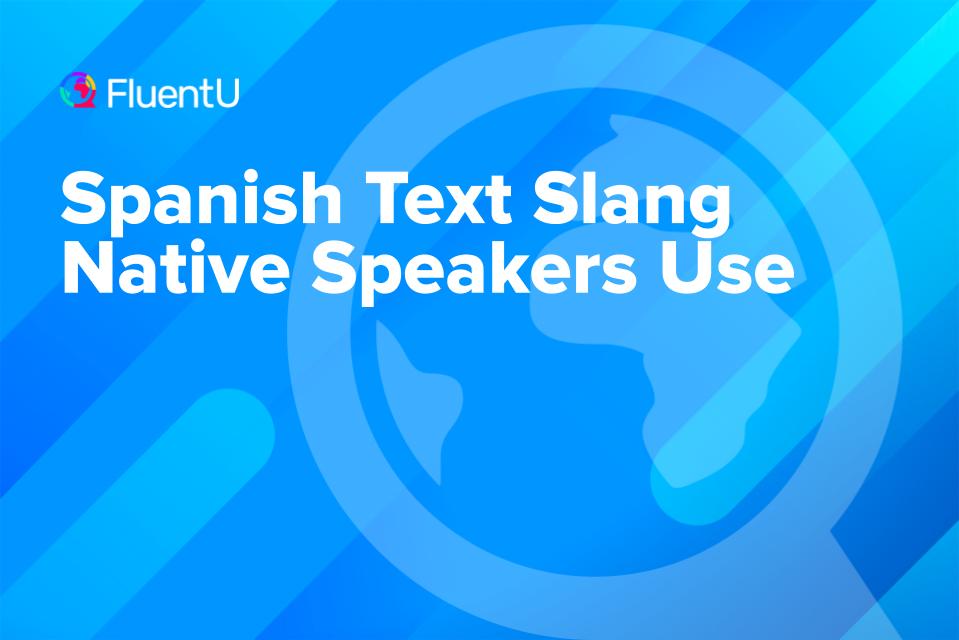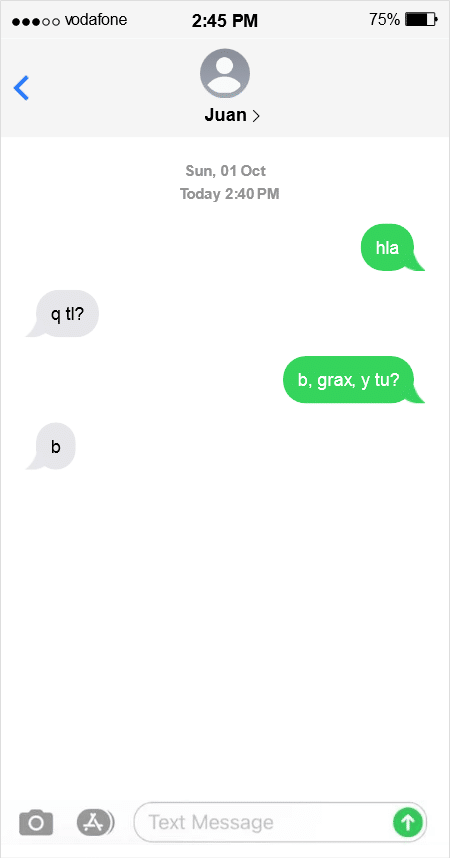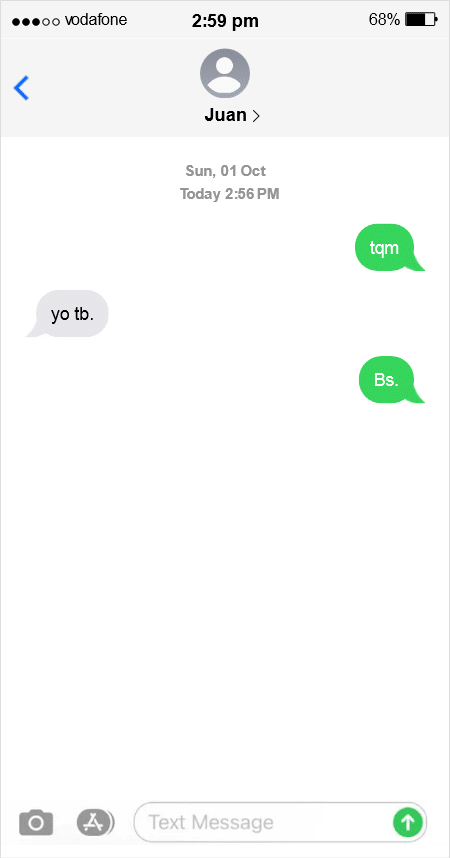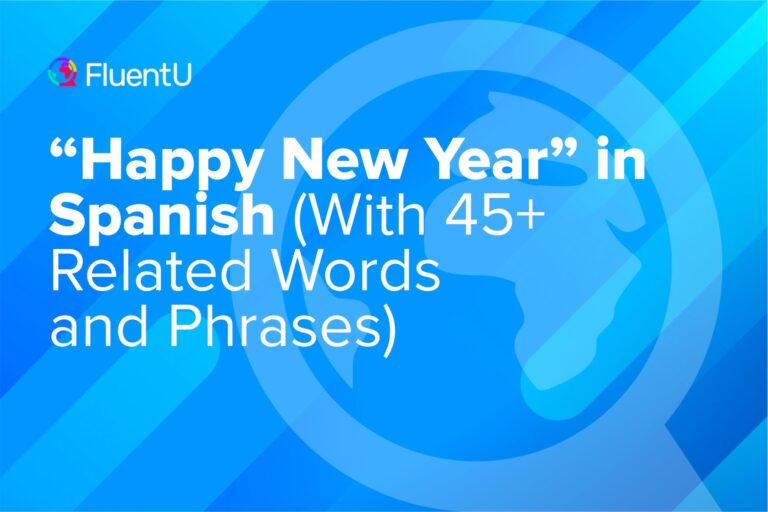Spanish Text Slang Native Speakers Use

Can’t understand what your Spanish friends are saying online? Learning to read and write in Spanish isn’t as easy as it used to be.
In this world of tweets and text messages, you’ll need to learn Spanish text slang to follow what’s going on.
Download: This blog post is available as a convenient and portable PDF that you can take anywhere. Click here to get a copy. (Download)
Common Spanish Text Slang
Here’s a table of some of the most common Spanish text slang. If this looks a bit intimidating, don’t worry: we’ll go into the “rules” for writing text slang in Spanish later!
| Spanish Text Slang | What It's Shorthand For | English Translation |
|---|---|---|
| - | menos | minus less |
| + o – | más o menos | so-so sort of kind of |
| + | más | plus more |
| = | igual | equal same |
| 100pre | siempre | always |
| 100to | siento | I feel like |
| 5mentarios | sin comentarios | no comment no words |
| aber | a ver | let's see |
| aki | aqui | here |
| al - | al menos | at least |
| alv | a la verga | f**k it (offensive) |
| amig@s amigxs | amigos amigas | friends |
| amix | amigo amiga | friend |
| aora | ahora | now |
| asies | así es | that's right |
| ayno | ¡ay, no! | oh no! |
| bb | bebé | baby babe |
| bbr | beber | to drink |
| bn | bien | good |
| bno | bueno | fine all right |
| bnx | buenas noches | good night |
| bs bss | besos | kisses |
| bsto | besito | little kisses |
| cdo | cuando | when |
| cdt | cuídate | take care |
| chale | chale | damn |
| chic@s | chicos chicas | boys girls |
| cm | cómo como | how |
| cmo stas? | ¿cómo estás? | how are you? |
| d | de | of |
| da = | da igual | it's all the same it doesn't matter |
| de+sia2 | demasiados | too many |
| dnd | dónde donde de nada | where you're welcome |
| dtb | Dios te bendiga | God bless you |
| F | F | F (used to express frustration or disappointment, similar to the way it's used in English slang) |
| finde | fin de semana | weekend |
| gfe gfa | jefe jefa | boss father mother |
| gnl | genial | great |
| gnt | gente | people |
| gpi | gracias por invitar | thanks for the invite (used jokingly to reply to other people's fun/tasty-looking posts) |
| grax grx | gracias | thanks |
| hla | hola | hello hi |
| hno | hermano | brother |
| hna | hermana | sister |
| k ke | qué que | what |
| k ase? | ¿qué haces? | what are you doing? what are you up to? |
| kdmos | quedamos | let's meet |
| keseso? | ¿qué es eso? | what's that? |
| kienes | quiénes | who |
| kiero | quiero | want |
| kn | quién quien | who |
| kntm | cuéntame | tell me |
| komo | cómo como | how |
| ksa | casa | house |
| kual | cuál | which, what |
| kuxa | escucha | listen (to me) |
| kyc | cállese | shut up be quiet |
| kyt | cállate | shut up be quiet |
| m gusta | me gusta | I like it |
| m parece bien | me parece bien | looks good to me |
| mdi me da = | me da igual | I don't care |
| msj | mensaje | message |
| mua muak | - | xoxo |
| mxo | mucho | much |
| namas | nada más | only that |
| no c | no sé | idk (I don't know) |
| npn | no pasa nada | it's okay don't worry |
| ntc | no te creas | jk (just kidding) |
| ntp | no te preocupes | don't worry |
| ola | hola | hello hi |
| onde | dónde donde | where |
| pa | para papá | for to dad |
| pco | poco | little |
| pera | espera | wait |
| perame | espérame | wait for me wait up |
| pk pork pq | por qué porque | why because |
| pos | pues | well then |
| pti | para tu información | fyi (for your information) |
| q | qué | what |
| qdmos | quedamos | let's meet |
| qnes | quiénes | who (plural) |
| qiero | quiero | want |
| qmple | cumpleaños | birthday |
| re100 | recién | recently just |
| salu2 | saludos | greetings |
| sbs? | ¿sabes? | you know? |
| sisoy | si soy | relate |
| srt | suerte | good luck |
| stld | si tú lo dices | if you say so |
| t | te | (to) you |
| ta | está | it's |
| ta bn | está bien | it's okay |
| ta weno | está bueno | okay it's okay |
| t amo | te amo | I love you |
| tan | están | you're they're |
| tb tbn tmb tmbn | también | too also |
| tbj | trabajo | work |
| tkm tqm | te quiero mucho | I like you very much |
| tlj | te lo juro! | I swear! (informal) |
| tmc | te me cuidas | take care of yourself |
| tnces tonces tons | entonces | so then |
| to | todo | all |
| toy | estoy | I am |
| tq | te quiero | I love you |
| tvo | te veo | I see you |
| vamo | vamos | let's go |
| vasir? | ¿vas a ir? | are you going? |
| vdd? vrd? | ¿verdad? | right? |
| vns? | ¿vienes? | are you coming? |
| voa | voy a | I will |
| wapa wapo | guapa guapo | beautiful handsome |
| x | por | for by |
| x favor | por favor | please |
| x nada | por nada | you're welcome |
| x2 | por dos | same (lit "by two") |
| xa | para | for |
| xa k? xa q? | ¿para qué? | what for? |
| xau | chau | bye |
| xdon | perdón | I'm sorry |
| xfa | por favor | please |
| xk xq | por qué porque | why because |
| yen2 | yendo | on my way |
| ymam ymm | llámame | call me |
| yo tb ytb | yo también | me too |
The Characteristics of Spanish Text Message Slang
Omitting letters
Like in English, omitting vowels (vocales) is one of the easiest way to shrtn wrds. Genial becomes gnl, for example.
Losing consonants works too. Ahora is often written as aora.
But of course, it’s not always just a simple case of getting rid of the vocales.
When a word begins with es, drop those first letters. So estoy becomes toy and esta becomes ta.
Switching letters
Another Spanish text slang characteristic is switching letters. For example, the letters q and c both change to k, so quiero becomes kiero, aquí becomes aki and quién becomes kn.
Note that the word que on its own can either change to k or q.
As you’ve seen, x is another letter that’s used a lot in Spanish text slang. X usually symbolizes por, so por favor (please) becomes xfa. Porque and ¿por qué? (because and why) become xq and xq?, respectively.
As por and para are similar (though sadly not exactly the same!), para becomes xa. Para qué? (another version of “why?” or “what for?”) becomes xa q?
The third and final way you can use the x in Spanish slang is to replace ch. For example, mucho becomes mxo and chau becomes xau.
Abbreviations
In English, we have FYI, LOL, ROFL and various other abbreviations. In Spanish, there are plenty of phrases that work in a similar way. Te quiero mucho becomes tqm or tkm, for example.
A basic chat message might start like this:
In “normal Spanish,” this means:
Hola (Hi)
¿Qué tal? (How are you?)
Bien, gracias ¿y tú? (Good, thanks. And you?)
Bien. (Good.)
Have lots of jajajaja in the middle while you chat about silly things and have fun. To “laugh” in Spanish, you can use jajaja, jejeje or jijiji.
An end to a chat might look something like this, assuming you guys like each other:
The “normal Spanish” translation for this one looks like:
Te quiero mucho (Love you)
Yo también (Love you too)
Besos (Kisses)
You can also end a text with bst (which means besito or “little kiss” in English) and a scattering of emoticons won’t hurt matters either.
It’s important to note that some Spanish speakers, especially young people, may use the English phrases instead of the Spanish equivalent. For example, they might use LOL (laugh out loud) or OMG (oh my God) in their English forms, since most people already know what they mean in English.
Numbers Used in Spanish Text Slang
In English, we might end a text with “cul8r.” We can also say something is gr8! The same concept of using letters for the way they sound applies to Spanish words.
For example, what do you think salu2 means? Salutwo? No, remember, that we’re speaking Spanish here so 2 is pronounced dos. So salu2 means saludos!
There you go. You can now send greetings to people in your text messages.
Other phrases using numbers are:
re100 = recién (recently)
100pre = siempre (always)
You could end your text message with: Tqm xa 100pre. That would mean, te quiero mucho para siempre or “I love you forever.” Or simply end with salu2, to play it a bit cooler.
Symbols Used in Spanish Text Slang
Symbols can also be used in fun ways to make phrases. If you want to say me da igual (I don’t mind), for example, you could choose between MDI, me da = and da =. (Remember that = is pronounced igual in Spanish.)
The phrase más o menos is used a lot in Spanish to mean “so, so,” “sort of” or “kind of.” Mathematical symbols are used here (más = plus, menos = minus) so the phrase becomes: ” + 0 – ” (Yes, you read that right.)
You might have also noticed that some Spanish speakers use the @ sign in words like amig@s or chic@s.
This isn’t just to look cool, but rather it’s a way of representing that the friends or people could be boys or girls, (where they’d usually be either amigos or amigas) and making Spanish more gender neutral. Got that, + o –?
You’ll also notice that, to save space, the upside-down question and exclamation marks aren’t used in Spanish text slang.
Why You Need to Learn Spanish Text Message Slang
It’s not just to keep up with the cool kids.
There are several practical reasons learning Spanish text slang is useful for anyone.
Cutting down on characters will save you money on texts in the long run. Your friends will also be glad to no longer receive your four-message-long essays. If you’ve ever had several messages “beep” in quick succession on your phone, you know how annoying this can be.
You can simply say less in your messages, or you can use fewer characters to say the same thing. I think you’ll agree that the second option is more appealing.
Even if don’t regularly write text messages in Spanish, Spanish text slang is used across social media sites like Facebook and Instagram, as well as messaging services like WhatsApp. Using and understanding this slang will make you sound like an authentic member of the Spanish-speaking community.
Which you are, of course. Right?
Deciphering all those signs and symbols can be a fun way to use the Spanish you already know in a new way.
So there you have it! You should be able to impress your Spanish-speaking friends and bombard them with messages, hashtags and threads. And, of course, your text messages will be much shorter now.
Next on your list should be spoken slang. That’s basically like audio text messages, right? Okay, maybe that’s a stretch. But if you want to sound natural in Spanish, it’s always a good idea to learn some common slang actually used by Spanish speakers.
One way to learn useful Spanish slang is on FluentU, where you can hear it used through Spanish videos like movie clips, music videos and vlogs.
FluentU takes authentic videos—like music videos, movie trailers, news and inspiring talks—and turns them into personalized language learning lessons.
You can try FluentU for free for 2 weeks. Check out the website or download the iOS app or Android app.
P.S. Click here to take advantage of our current sale! (Expires at the end of this month)

Go for it, chic@s!
Download: This blog post is available as a convenient and portable PDF that you can take anywhere. Click here to get a copy. (Download)
And One More Thing…
If you've made it this far that means you probably enjoy learning Spanish with engaging material and will then love FluentU.
Other sites use scripted content. FluentU uses a natural approach that helps you ease into the Spanish language and culture over time. You’ll learn Spanish as it’s actually spoken by real people.
FluentU has a wide variety of videos, as you can see here:

FluentU brings native videos within reach with interactive transcripts. You can tap on any word to look it up instantly. Every definition has examples that have been written to help you understand how the word is used. If you see an interesting word you don’t know, you can add it to a vocab list.

Review a complete interactive transcript under the Dialogue tab, and find words and phrases listed under Vocab.

Learn all the vocabulary in any video with FluentU’s robust learning engine. Swipe left or right to see more examples of the word you’re on.

The best part is that FluentU keeps track of the vocabulary that you’re learning, and gives you extra practice with difficult words. It'll even remind you when it’s time to review what you’ve learned. Every learner has a truly personalized experience, even if they’re learning with the same video.
Start using the FluentU website on your computer or tablet or, better yet, download the FluentU app from the iTunes or Google Play store. Click here to take advantage of our current sale! (Expires at the end of this month.)









